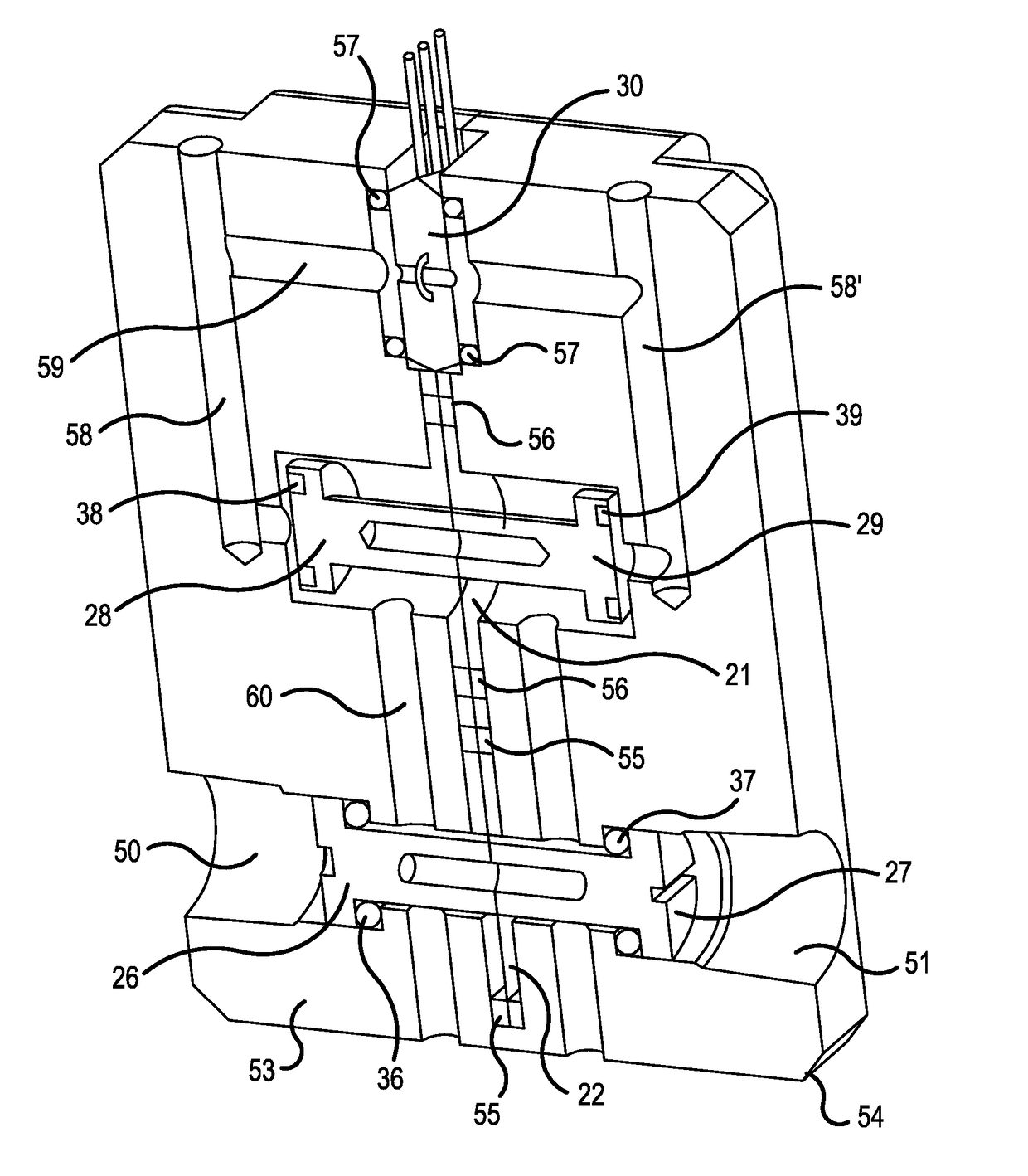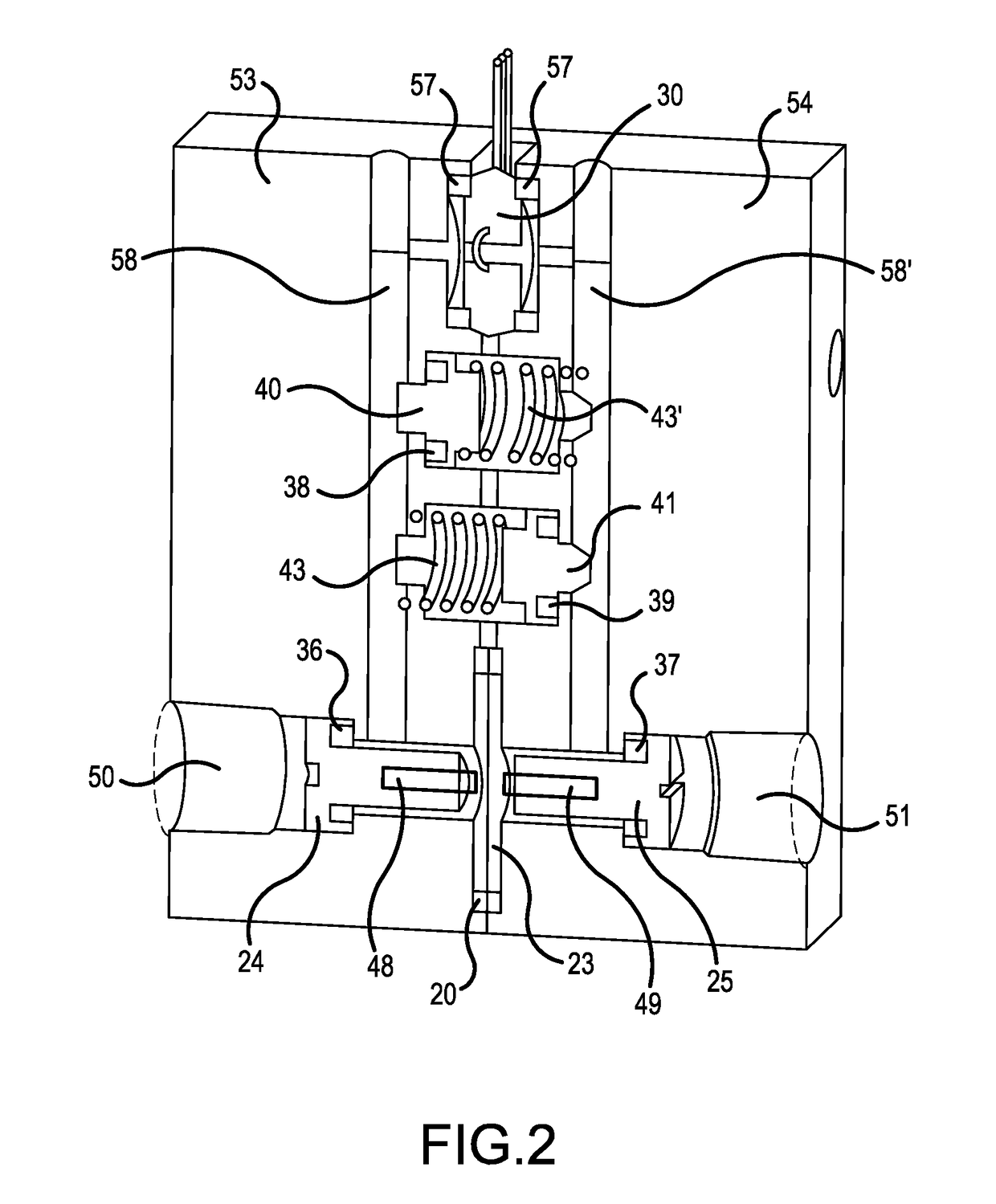Differential pressure transducer assembly with overload protection
a technology of differential pressure transducer and overload protection, which is applied in the direction of fluid pressure measurement by electric/magnetic elements, measuring devices, instruments, etc., can solve the problems of requiring overpressure protection, affecting the accuracy of digital data output, and mechanical sensors of the early 20th century, so as to reduce the internal pressure slightly, increase the internal volume, and eliminate any additional pressure
- Summary
- Abstract
- Description
- Claims
- Application Information
AI Technical Summary
Benefits of technology
Problems solved by technology
Method used
Image
Examples
Embodiment Construction
[0023]The device of FIG. 1 provides two diaphragm mechanisms, which protect against pressure increases and decreases. For example, overload stop valves 26 and 27 protect against increasing pressure and overload stop valves 28 and 29 protect against sudden pressure release. Together, the two valves 28 and 29 provide excess pressure protection for a differential pressure sensor 30.
[0024]Each overload stop valve 26, 27, 28 or 29 is seated in an open and unbiased position substantially perpendicular to diaphragm elements 21 or 22. Each overload stop valve 26, 27, 28 or 29 includes a wide end or head, which is seated between a lip in the first pressure port and a main body of the protection device. Each overload stop valve also includes a short end which extends up to the diaphragm element 21 or 22. The diaphragm elements 21 or 22 can be made of, for example, a metal or an alloy, and can be flat or made with a wave structure. However, any other structure which allows and optimizes deflec...
PUM
 Login to View More
Login to View More Abstract
Description
Claims
Application Information
 Login to View More
Login to View More - R&D
- Intellectual Property
- Life Sciences
- Materials
- Tech Scout
- Unparalleled Data Quality
- Higher Quality Content
- 60% Fewer Hallucinations
Browse by: Latest US Patents, China's latest patents, Technical Efficacy Thesaurus, Application Domain, Technology Topic, Popular Technical Reports.
© 2025 PatSnap. All rights reserved.Legal|Privacy policy|Modern Slavery Act Transparency Statement|Sitemap|About US| Contact US: help@patsnap.com



